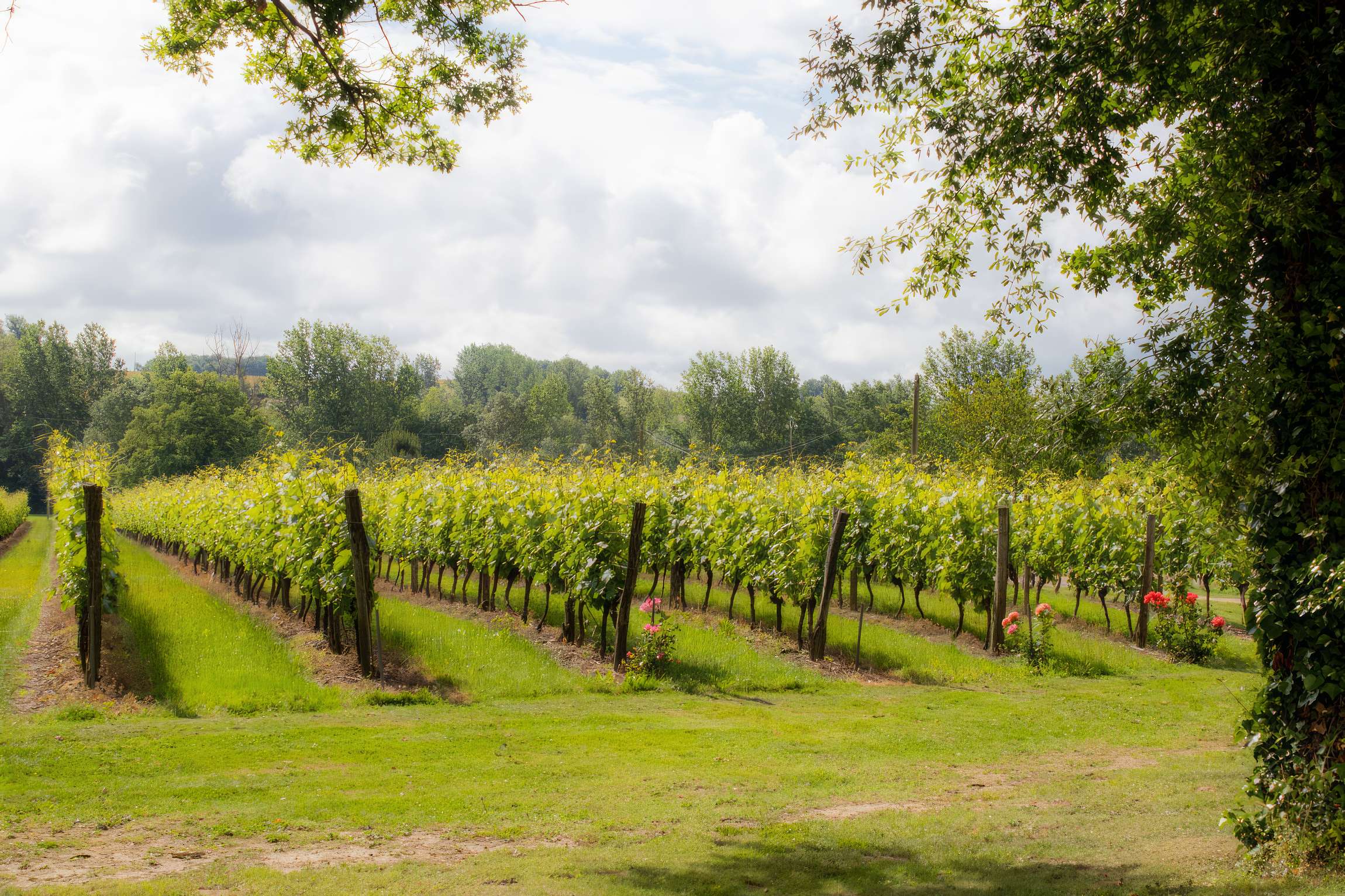The Floc de Gascogne
and its territory
Before being a typical Gascony aperitif wine, Floc de Gascogne is the fruit of a well-identified territory, vineyard and production area.

The Gascony Armagnac Vineyard
Floc de Gascogne is an AOC (Appellation d’origine contrôlée) and an AOP (Protected Designation of Origin), its production territory is therefore defined by specifications. This territory is the Gascogne Armagnac Vineyard.
It has the particularity of producing 3 products : Côtes de Gascogne wine (IGP), Armagnac (AOC) and Floc de Gascogne. It covers 20,000 hectares and 3 departments : Gers, Landes and Lot-et-Garonne. 3 climates meet there: Oceanic, Continental and Mediterranean.
A vineyard with a thousand-year history
The specificity of this vineyard is the diversity of its soil which produces products with varied aromas. 16 million years ago, in the Middle Miocene, the Atlantic Ocean lapped the Gascon lands up to half of the Gers. This oceanic presence enriched the soil and gave it its nature.
Bas Armagnac
Bas Armagnac has sandy soil rich in silt. Its red color is due to the presence of iron. This soil is called Tawny Sands.


Armagnac Ténarèze
Armagnac Ténarèze partly benefits from this sandy soil but also offers a wealth of limestone soil known as Boulbènes.
Haut Armagnac
Haut Armagnac, facing the Mediterranean, is more subject to winds. Its soil is clayey, limestone and terrefort.

The Floc de Gascogne production area
Floc de Gascogne is thus a strong identity element of Gascony, of the famous gastronomy of the Gers in particular. Tasting a Floc de Gascogne is entirely part of the experience during a visit to the Gers and its vineyards.
In the 3 areas, Floc de Gascogne producers are mainly present in Bas Armagnac, then Armagnac Ténarèze, and finally in Grand Armagnac.



